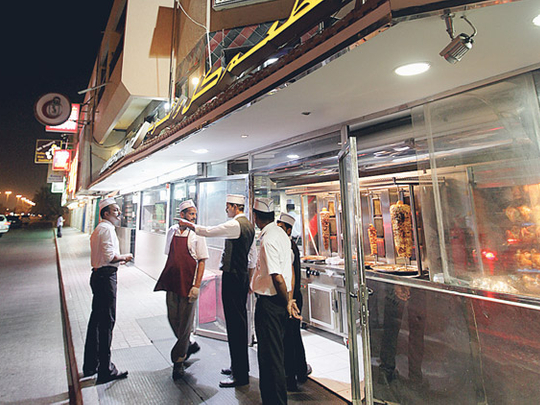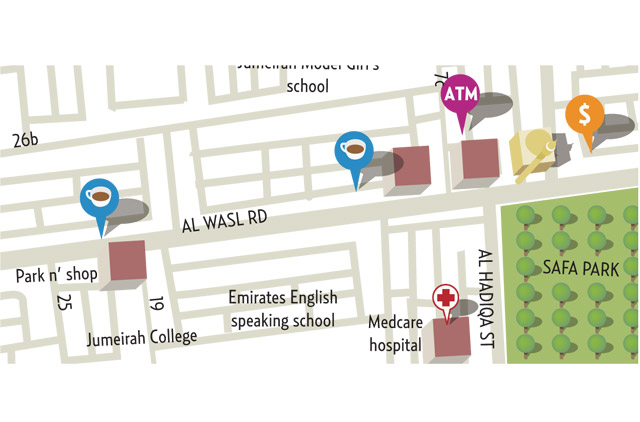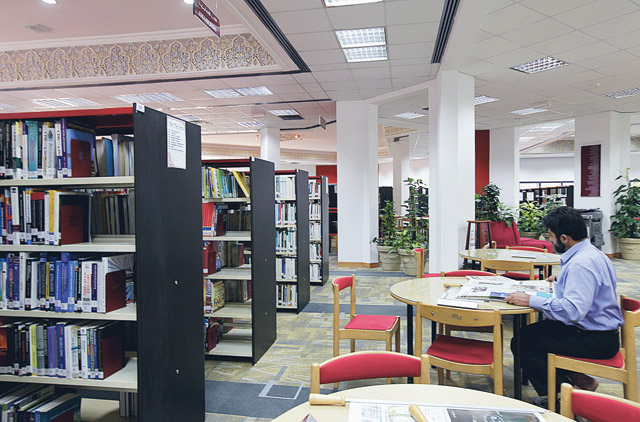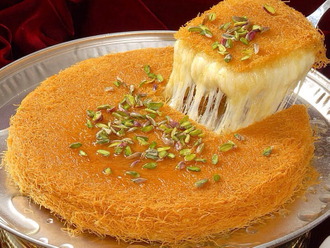
The communities and neighbourhoods of the UAE are multiculturally diverse. In this fortnightly series, Gulf News delves deep into the heart of one of the most popular districts in Dubai...
Popular among expatriates and locals alike, Jumeirah houses somewhere around 26,000 residents. The neighbourhood stands as a buffer between the inner city and Dubai's outer realms.
Concentrated in a small area, residents live in a community, with schools, supermarkets, and small businesses all in the immediate vicinity. It offers a different kind of atmosphere away from the mega malls and skyscrapers of modern Dubai.
Street smart
As you exit Shaikh Zayed Road and pass Safa Park there is a sign saying ‘Welcome to Jumeirah' and here you leave behind the high rises and mega malls.
As you turn left the signboards tell you that this is Jumeirah 3, which extends down Al Wasl Road until Umm Al Sheif Street.
The layout of this district is in stark contrast to the newer more regimentally arranged developments of Dubai. Jumeirah's layout seems older and more natural and not something that was created in an architect's studio.
Rows of palm trees bearing dates line the road medians — a reminder of the desert landscape that we inhabit. These palms are groomed by men in green over-alls, tending to their every need.
The residences which line the road are of every shape and size. Huge mansions and houses that look like palaces lie hidden behind high walls and gates, covered with trees and shrubbery, a world apart. The design of the villas and bungalows is a mix ranging from European, with slanting roofs and some are decidedly Arab in character.
Worn and faded
Here you will find stand-alone properties in compounds and they are few in number when compared to the mega communities built elsewhere in Dubai. Some of the structures look worn and faded due to the effect of the harsh sunlight and the shifting sands. Their look is not of dilapidation but maturity, existing here for many years as homes.
Some of the villas and bungalows house families, while others host businesses and boutiques. From beauty salons to health clinics, it would be difficult to tell the residences from commercial buildings were it not for the signboards. This is a common feature across Al Wasl and its environs, preventing the need for large malls and at the same time maintaining the residential feel of the district.
The assorted mix of real estate is mirrored by the people who live in the area — locals and expatriate families of many different nationalities from all over the world. "Some areas in Dubai tend to be dominated by certain nationalities," says Varun Pahlajani.
"But Jumeirah is wholly multicultural." The 21-year-old university student was born and raised in Dubai, and has frequented many of its different districts. Compared to Bur Dubai, Jumeirah has quite a different flavour, he says. He drives to Jumeirah in order to study at the Al Safa Public Library located opposite Safa Park.
"It's a great atmosphere to study," he explains. "When I'm there I see kids coming in straight from school still in their uniforms, studying alongside university students like myself. They are mainly Europeans. Later in the day you tend to see elderly Arab men coming in to read their Arabic books, and Indian security guards making use of the internet facilities."
Varun is eager to mention the many food outlets in the area and cafeterias and canteens are aplenty. From Eat and Drink to Antar there is much demand for the local speciality — shawarmas, which Varun claims are some of the best in Dubai. Aside from these local cafeterias, one can find such places as a Fish and Chip shop and Mexican Bistro, located not in shopping centres but in the heart of this residential district surrounded by sand and palm trees; the international blends seamlessly with the Arabian street setting.
The multicultural feel of the district is also in the supermarkets that line it. Most of Dubai's major supermarkets line the part of Al Wasl Road running through Jumeirah 3. Union Co-Op stands imposingly at one spot, while next door is Choithrams. Down the road lies Park 'n' Shop and further up Spinneys, all displaying an array of both local and foreign products.
Hectic lifestyle
Supermarkets here represent a kind of town centre feel and are local landmarks. Contained within them you find bakery, butchery, florists, and even launderettes. In our hectic lifestyles today such facilities are welcome and are a big draw for people to the area.
Nadia Malas, 17, feels the Jumeirah area's popularity lies in its location. "It's close to everything you need — schools, malls, supermarkets. In places like Jebel Ali, you'd have to drive far for some places." Her most frequent journeys are to her school and Dubai Mall, which are both equal distance from her home.
The convenient location no doubt eases the stress of her final year at high school. Having lived in the area for 12 years, she says she's grown familiar with Jumeirah's people and places and definitely feels part of a community. "You get to know faces, and recognise people from the area, and everyone is really friendly. In winter when its cooler I am able to walk to my friends' houses which are nearby." She agreed that the area has a very international presence with her friends being from countries like Australia, South Africa and Norway, while she herself is originally from Syria.
Central location
Jumeirah's central location is perhaps the reason behind its unique character. "The location is between old and new Dubai," explains Mohit Manwani, a resident in the area for 14 years. "The community is made up of people who commute to other areas of Dubai." This becomes clear during the rush hour with people returning home from work and school, while motorists try and dodge the highway Salik toll.
"The traffic on Al Wasl Road during rush hour is a problem. But otherwise this residential area is nice and quiet, close to parks and beaches. We are away from the pollution and new constructions of Dubai's concrete jungle."
It's an apt observation since compared to other scenes of Dubai's ever-changing landscape Jumeirah has few cranes or construction sites. The area was well established before the property boom, having begun its life in the late 1960s as a home to Dubai's early expatriates.
It soon became an area where houses were built for successive waves of expatriates as Dubai's infrastructure grew and grew, which perhaps accounts for the more natural feel of the place. Mohit frequently hears cases of former residents who have moved away from Jumeirah regularly coming back to the same supermarkets to shop, possibly the result of the districts' ability to make you feel at home. The district is undeniably a home for many of Dubai's residents, most of who have lived in the area for many years and speak of it fondly.










